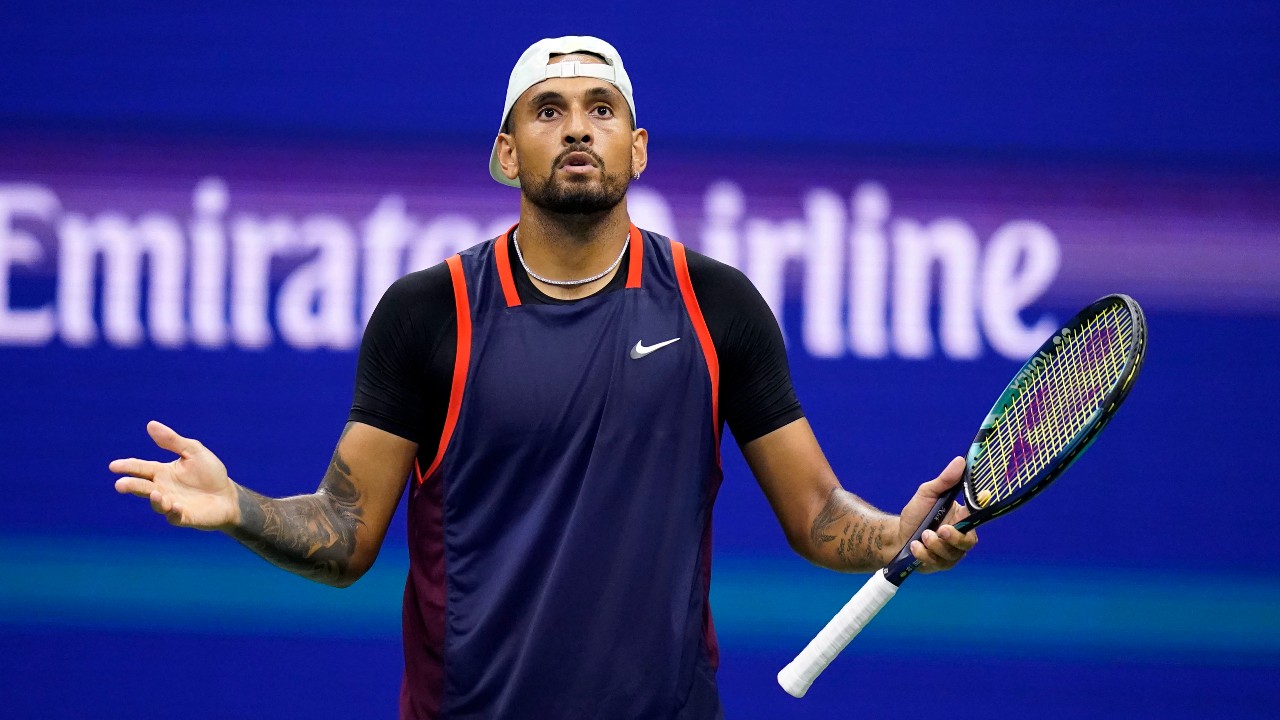Emma Navarro’s two-year plan has her ahead of schedule at US Open: ‘Don’t think there’s a ceiling’

It was a two-year contract. A plan, of sorts, between Emma Navarro and Peter Ayers.
She had just turned pro after two seasons at Virginia, winning the NCAA singles title her first year and then returning in an attempt to orchestrate an encore, and the pair agreed to a roadmap that — if executed properly — would limit the highest of highs and the lowest of lows that inevitably dot a tennis career.
After a successful week, it would be easy for Navarro to think “this is the best decision I’ve ever made in my life,” Ayers, the longtime coach of the New York-born world No. 12 for now, said Tuesday.
The inverse could easily happen, too. So instead, they focused on the day-by-day strides for two years to give her some “runway” before evaluating her overarching results.
If she got her “ears pinned back” by a player ranked No. 250 in the world, those thoughts could spiral to the point of second-guessing the decision to leave college early for professional tennis. They focused on the day-by-day for two years.
On the measurable — yet incremental — strides that could eventually merge and create the version of the player they both envisioned Navarro becoming.
That two-year mark arrived in June, Navarro said Tuesday.
Neither she nor Ayers even acknowledged it. She had already surpassed her own expectations by slowly, and then rather quickly, climbing the Women’s Tennis Association rankings, and that was followed by a run to the Wimbledon quarterfinals in July.
On Thursday, she’ll face Aryna Sabalenka in the U.S. Open semifinals with the chance to inch closer to her first Grand Slam title.
So if Navarro’s tennis career can be split into two-year intervals — two years at Virginia, her first two-year pact on the tour that ended three months ago — to this point, the earliest months of the 23-year-old’s latest era has flashed signs of an imminent breakthrough.
“I feel like the fact that she’s just never skipped any steps, I think, has really prepared her for these moments and to be in these big moments and on these big stages,” Sara O’Leary, Navarro’s head coach at UVA, told The Post. “And I think a big reason is because of the preparation that they’ve put in and the way that they’ve gone about it.”
When Navarro arrived at Virginia, O’Leary worked with her to add variety — the slices, the drop shots, the serves — and helped Navarro adjust to playing doubles regularly, too.
That helped her volleys improve. Navarro went 51-3 in singles in two years at Virginia, losing just one match her first year, but she also collected a 33-17 record in doubles. The same year she won the NCAA singles title, Navarro advanced to the semifinals of the NCAA doubles tournament with Rosie Johanson.
If O’Leary watches Navarro play a match now, she’ll notice that her former player avoids hitting shots from behind the baseline and off her back foot. They have more power. Same with the serves and returns.
“I think definitely she saw in college just the jump from junior tennis to college, she had to be more aggressive,” O’Leary said, “and then that jump from college to the pro level, you have to be more aggressive.”
Once Navarro left Virginia, though, she needed to follow the two-year plan with Ayers — someone O’Leary described as a “philosophical” coach.
In her first Grand Slam after leaving Virginia, Navarro won a match at the 2023 French Open, but that was followed by consecutive first-round exits at the final two majors of the year.
Then, she won the Hobart Invitational in her second tournament of the 2024 slate. She made another final and semifinal. She toppled then-No. 14 Madison Keys in the French Open before falling short against Sabalenka with a berth in the quarterfinals at stake.
And after snagging perhaps the biggest win of her career against Gauff at Wimbledon, she knocked off the top American again in Queens. Gauff struggled with unforced errors, O’Leary said, and Navarro capitalized.
One of her strengths — even before her time at Virginia — has revolved around outlasting opponents with long points, one after another after another, and hitting the extra shot to extend rallies and ultimately lead to a mistake.
That initial victory against Gauff captured the first layer to Navarro’s introduction as a name embedded in the future of women’s tennis. This latest run, with the second victory against Gauff mixed in, provided the latest.
But Navarro hasn’t changed, O’Leary said. She’s the “same old Emma” — just, this time, with a chance to end the tournament holding a Grand Slam trophy.
“I don’t think there’s a ceiling for Emma,” O’Leary said.
Related
Cameron Norrie advances at Indian Wells but top seed Alexander…
Great Britain's Cameron Norrie fought from a set down to reach the third round at Indian Wells but top seed Alexander Zverev was d
Tommy’s Time: All-Court American Seeks Next Milestone
His coach Brad Stine says that these types of big goals are what keeps the New Jersey native motivated. “There are still a lot of things within the sport tha
Nick Kyrgios acknowledges uncertain future after retirement from match with…
The latest setback for Nick Kyrgios has the Australian tennis player wondering aloud about his future. A nagging wrist injury forced an emotional Kyrgios to r
Former Indian Wells champion says she is ‘very sorry’ as…
The 2025 Indian Wells tournament is well underway as the stars of the WTA Tour search for success in the Californian desert.Several top stars will believe they












